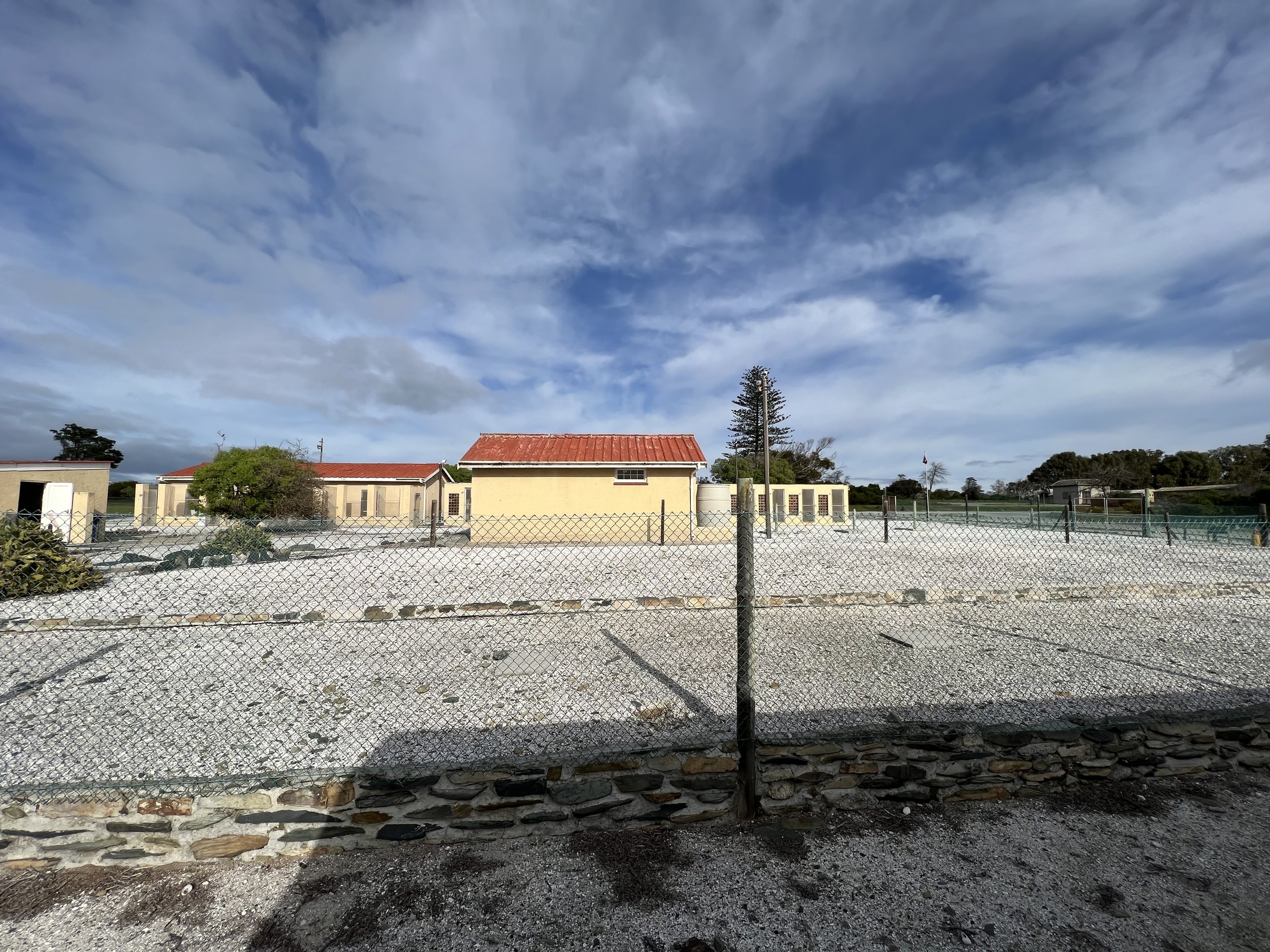My visit to Robben Island
Friday the 22nd of July I took a trip to Robben Island. This small island off the coast of Cape Town is a UNESCO world heritage site, so the tours are fairly restricted and there is no way to explore the island on your own. That’s OK though, because the tour is fairly comprehensive and presented well. It is a place of deeply tragic history. Americans sometimes tend to think of it as South Africa’s Alcatraz, but the comparison doesn’t hold up. Alcatraz was full of criminals: murderers, thieves, and of course tax evaders. Robben Island was a place of detention for political dissidents who were trying to cast off the oppression of Apartheid. People who’s ideas were banned by a repressive system attempting to institutionalize a corrupt and evil structural oppression. A better comparison is to Dublin’s Kilmainham Gaol, where the leaders of the 1916 Irish rebellion were executed, which is also a deeply moving experience.
The first part of the Robben Island tour is a bus ride around some places on the island which are not the maximum security prison. The modern infrastructure on the island mostly dates from WWII, when it was the primary defense post for the port of Cape Town, but there are some buildings that predate that, going back to it’s use as a leper colony, and before. But in many eras it has served as a place of exile, all the way back to the first Portuguese colonists banishing the African chiefs here in the 15th century. So all in all a very sad place
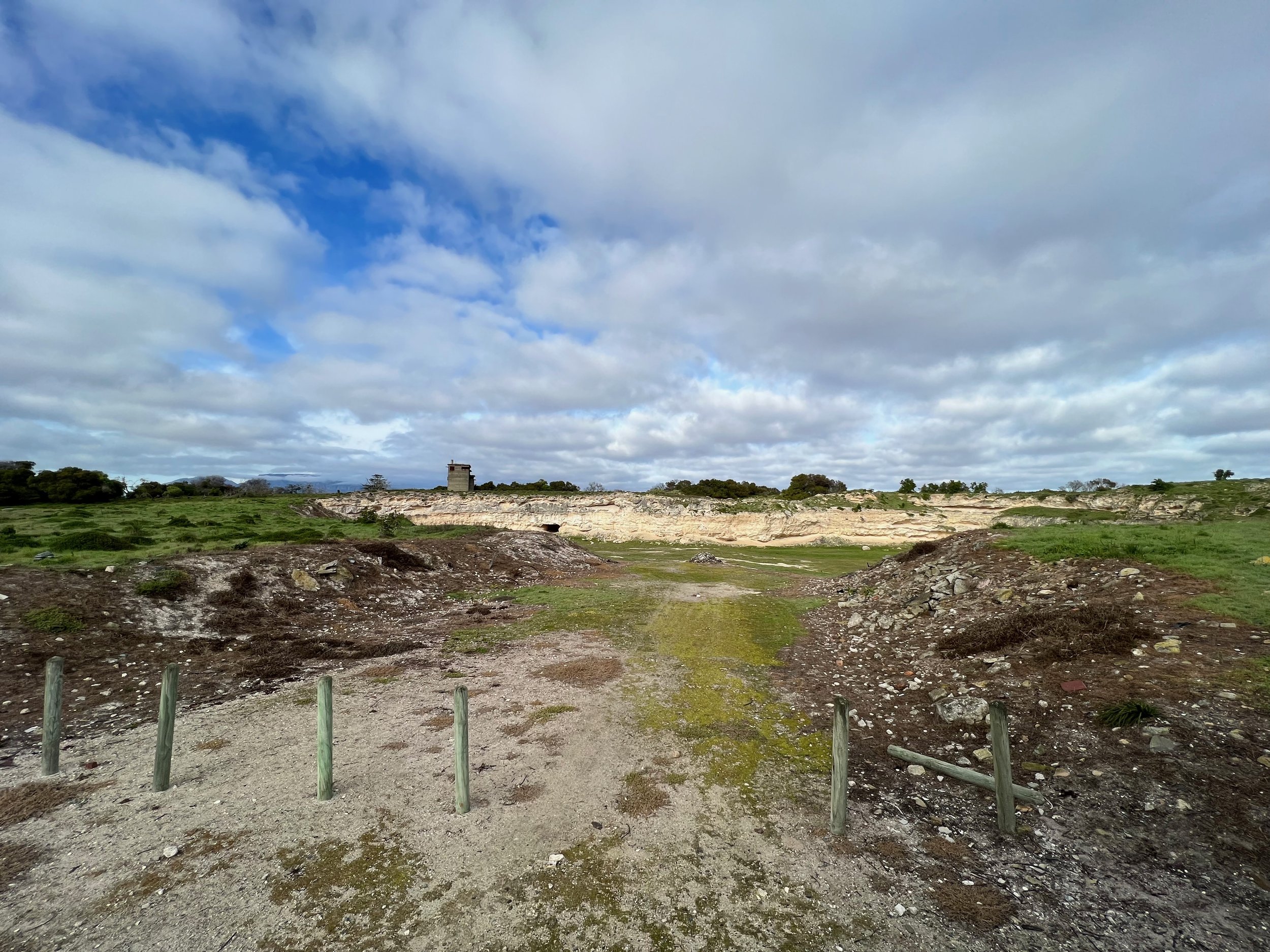
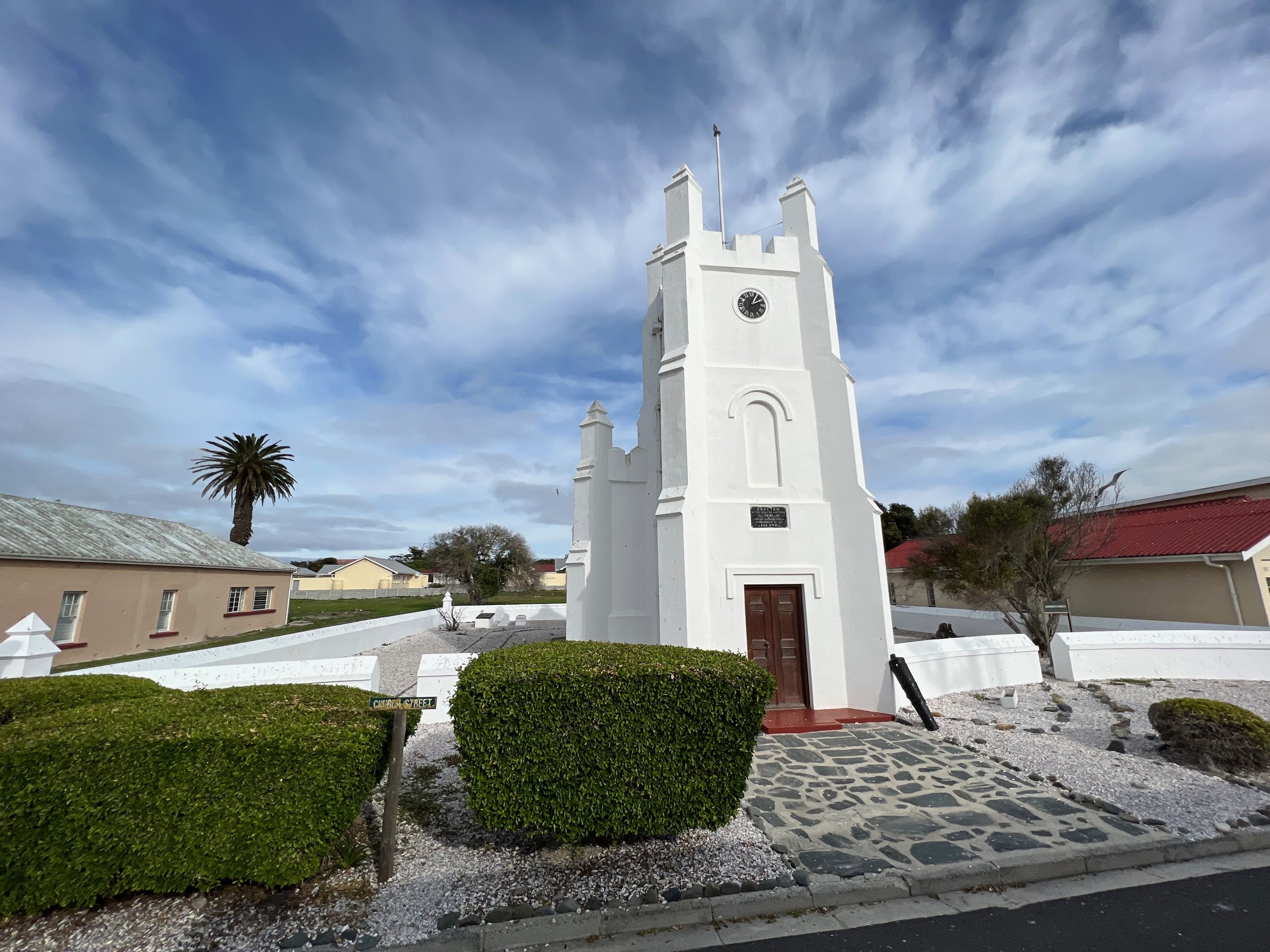
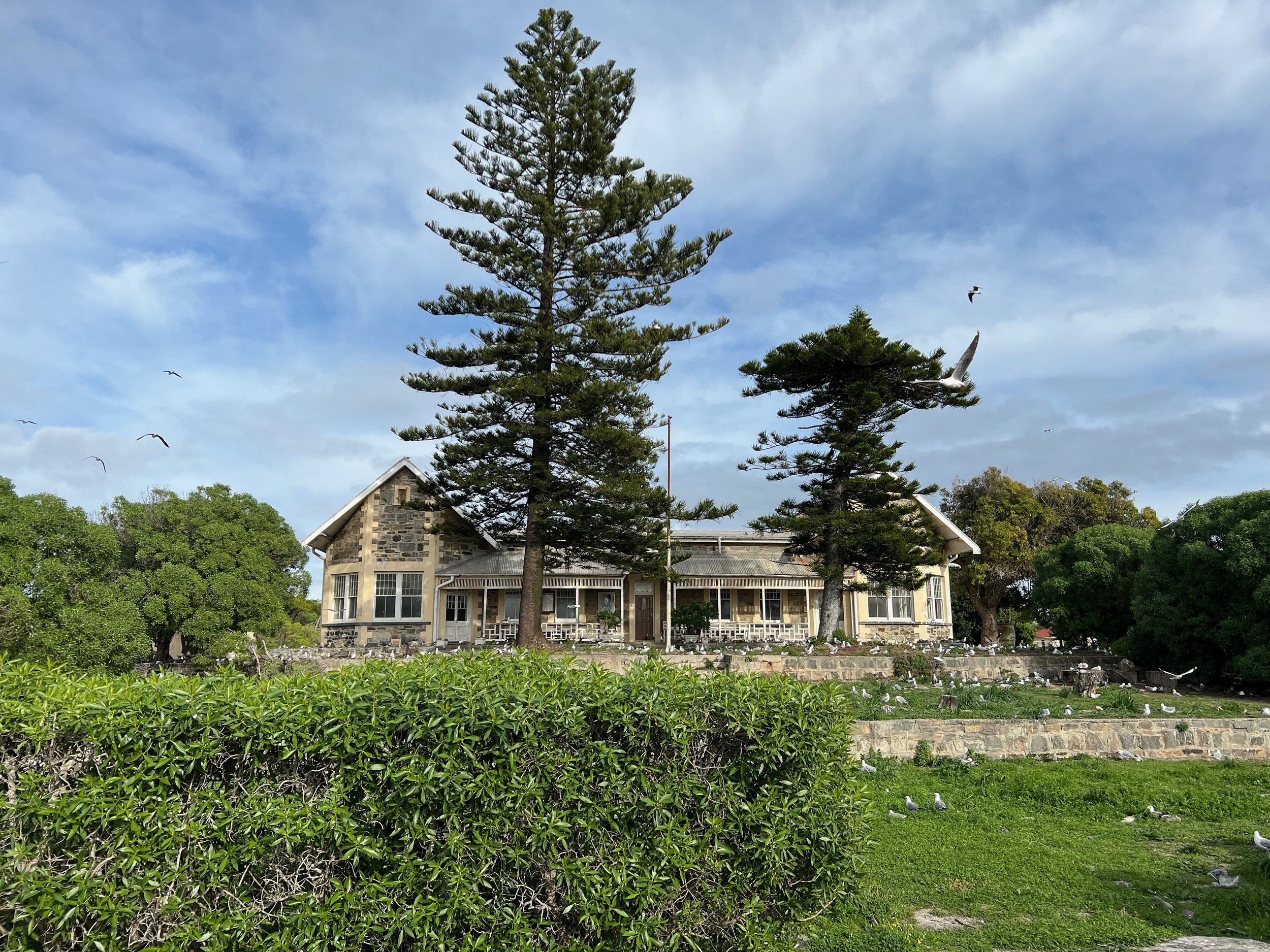
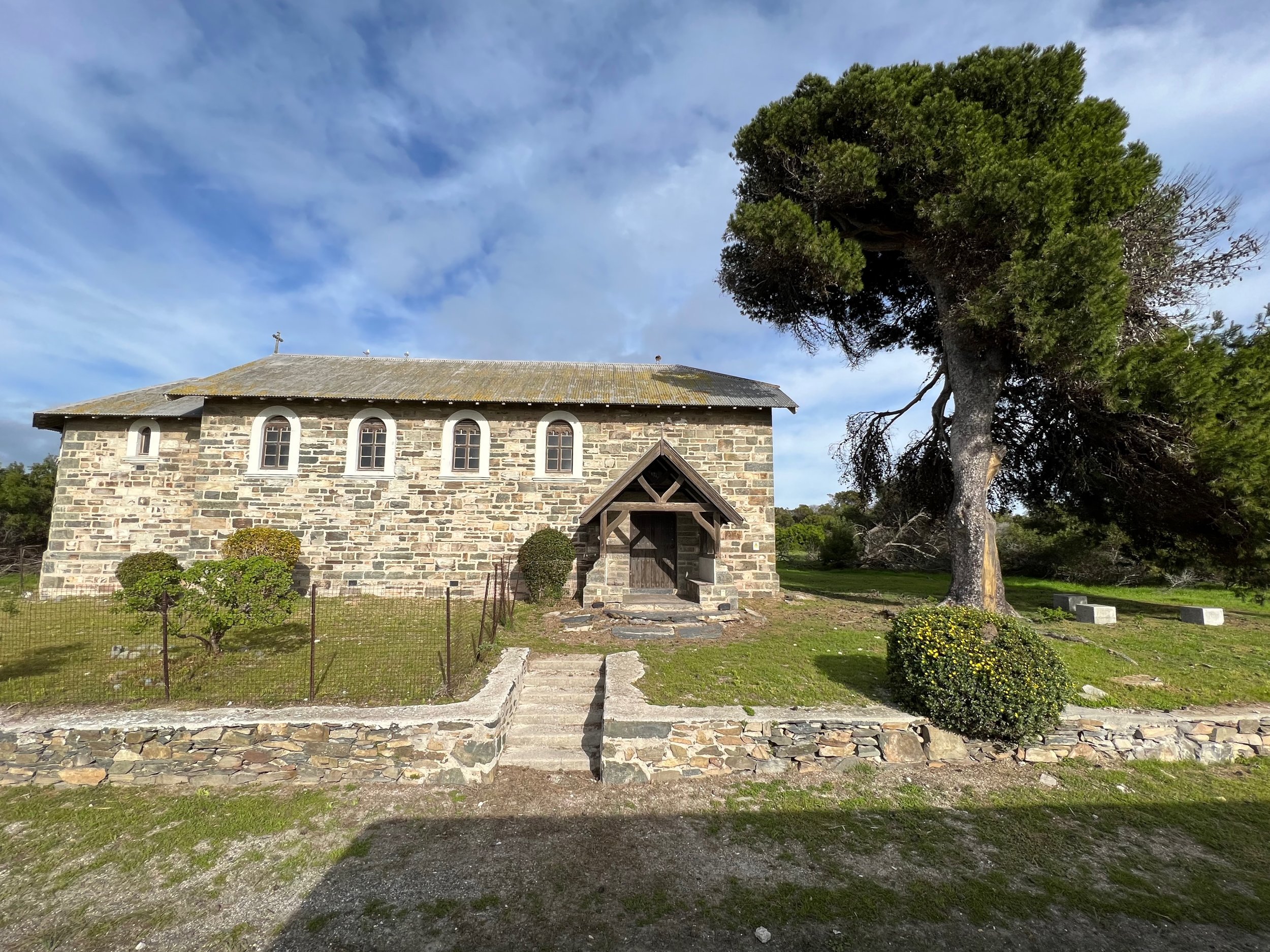
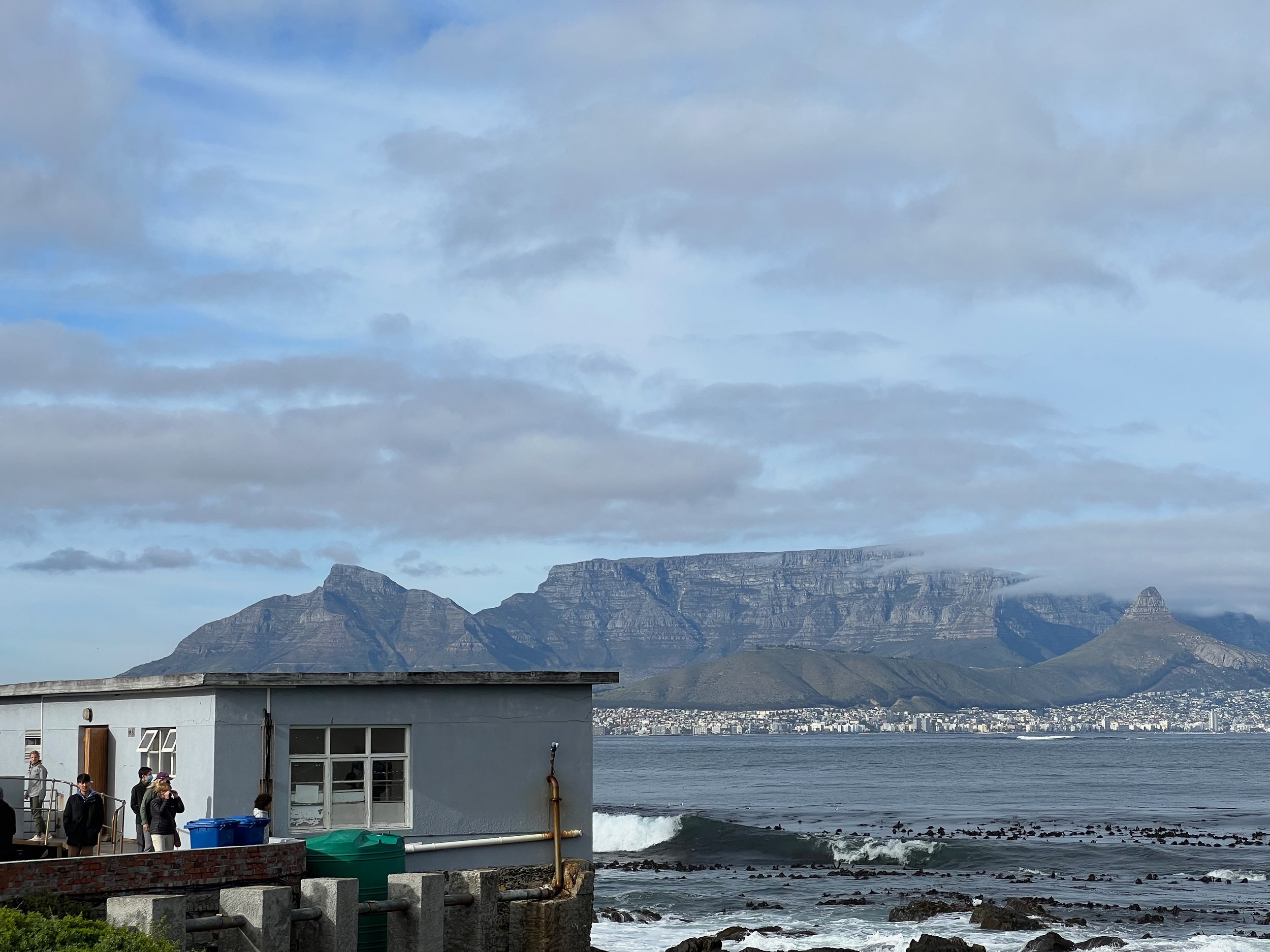
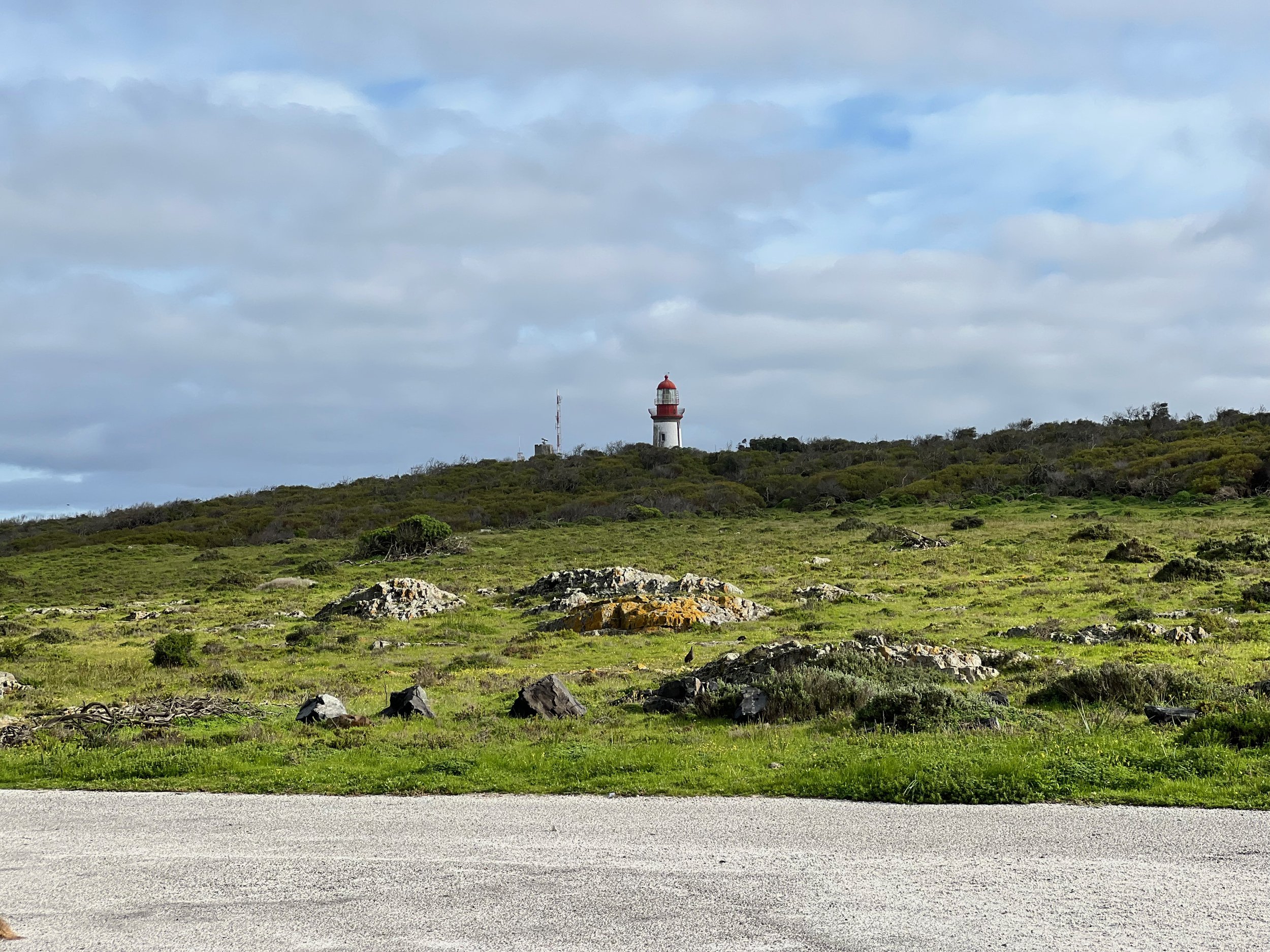
The bus stops at quite a few interesting places: The quarry where the political prisoners broke rocks into smaller rocks; The little white Garrison Church where, if you want, you can get married on Valentine’s day; The school which served the primary school built for the white children of the warders, which was functioning as a school for the families of the museum staff living on the island until recently closed; The Anglican Church which was attended by the prisoners on Sundays; The little shop at the south end of the island where you can get a great view of Cape Town and Table Mountain in the distance, and a coffee, and see the lighthouse on the next point around.
One thing which was on the tour which I had never heard of before, was this house:
This little building is outside the maximum security prison, on it’s own. The dog kennels were added later and not related to the story. This was where Robert Sobukwe, the original founder of the Pan African Congress, was held in total isolation from 1963 until his release into house arrest on medical grounds in 1969. During that time he was guarded by two white guards at all times. Why two? Because the wardens knew that if there was only one guard they would eventually wind up talking to Subukwe even if it was not permitted. With two guards each could watch the other and prevent any contact. I had never heard of Robert Sobukwe, but he is one of the true early heroes of the anti-apartheid movement in South Africa and this was the most moving part of the first half of the tour.
After the bus ride around the island, we are dropped off in front of the maximum security prison and introduced to our second tour guide, who handles the tour of the prison, culminating in a visit to the cell where Nelson Mandela was imprisoned for most of his term from 1964 to 1982. The tour guide was a former prisoner, who had spent 7 years in F section of the Robben Island Maximum Security prison for being a part of the ANC, fighting to overthrow the apartheid system. He led us into F Section and into the room where he had been imprisoned, a shared cell that housed many men.
He spoke of entering the prison and how the “Coloreds” and the “Blacks” were separated and treated differently, even showing that the black prisoners had a different meal menu with fewer calories than the other prisoners. Even within the walls the apartheid regime was trying to create division between the groups to ensure control. It’s a simple strategy that has proven effective throughout history.
He spoke about sleeping on the concrete floor until Amnesty International forced the government to give them bunk beds, and of being afraid of falling out of his top bunk.
He spoke about the detention and torture in Johannesburg when he was first arrested, and the policy of indefinite detention that allowed that to happen. He called out his jailer by name. He said that when he was released and married and had his first child, his father called him to say how happy he was that he could father a child after what they did to him.
This man, standing in a room full of tourists, relating his personal story, again. It was incredibly moving , and I hope that the world will recognize and learn the lessons that he has to teach us.
He then led us to B section, which was the area where Mandela was held. This was solitary. Instead of the shared crowded room with bunk beds, there were 36 small cells. Fourth one in, Mandela’s cell. But there were 35 others held here in isolation as well.
After the tour I asked him, with all that we heard in America about Truth and Reconciliation, did he ever have a chance to confront his torturers and would he if he could. He said that the TRC was not of interest to him, and that making the process voluntary for the former guards and policemen was a mistake. It was a touching moment to see this brave, now old man reveal these emotions, and I’ll never forget it. I really hope that the lessons of Robben Island and South Africa are not lost with the passing of his generation.
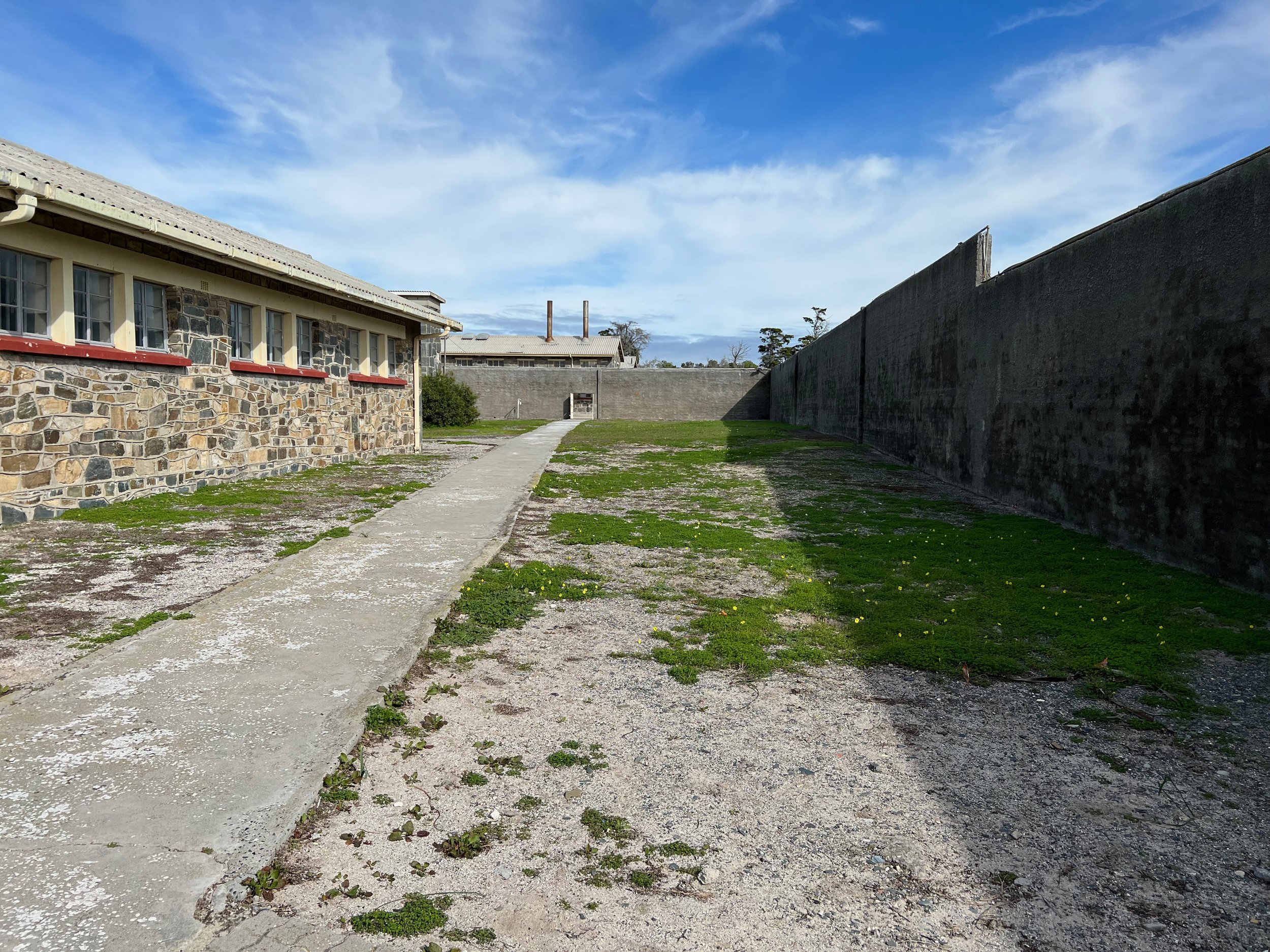
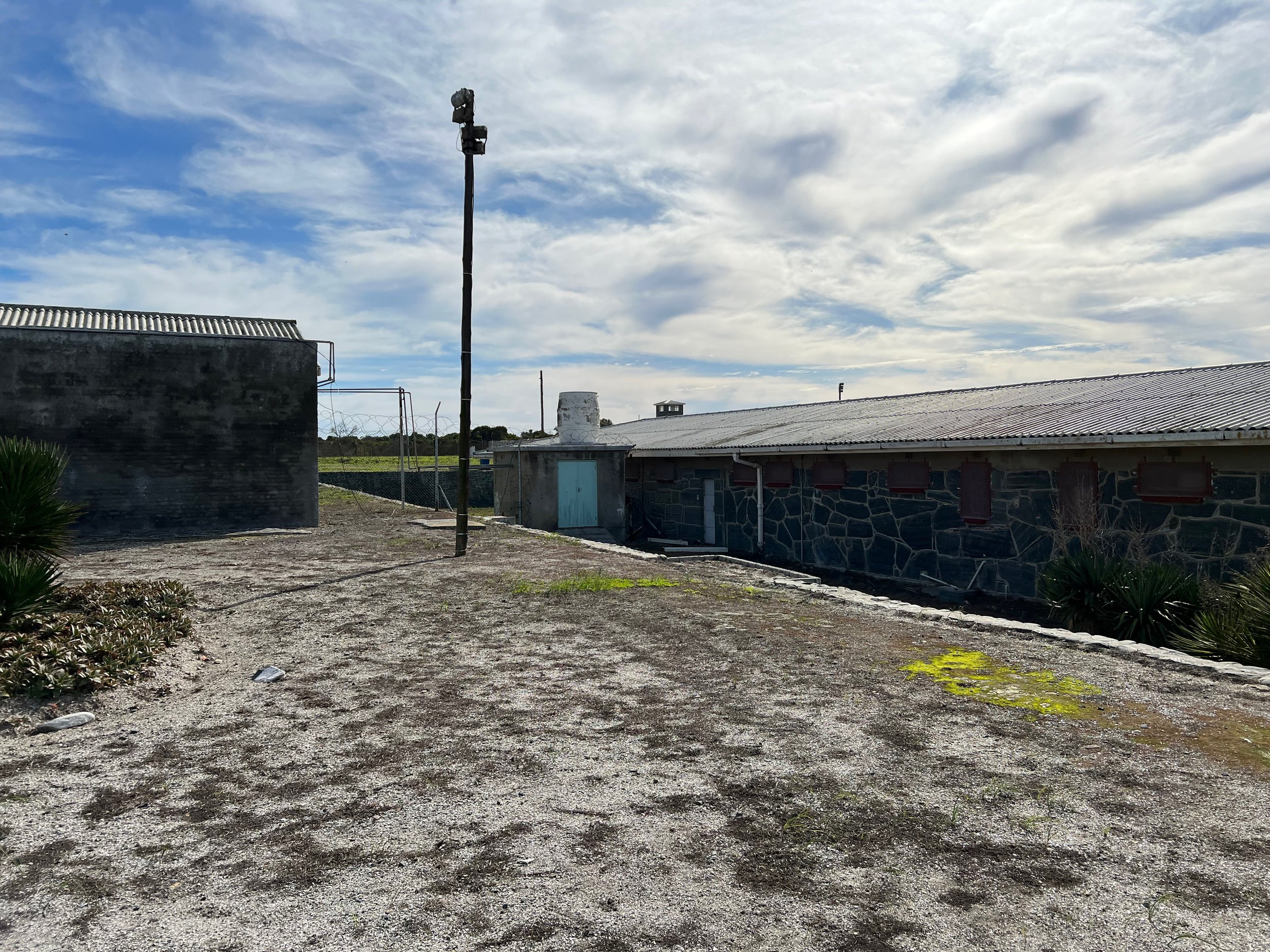
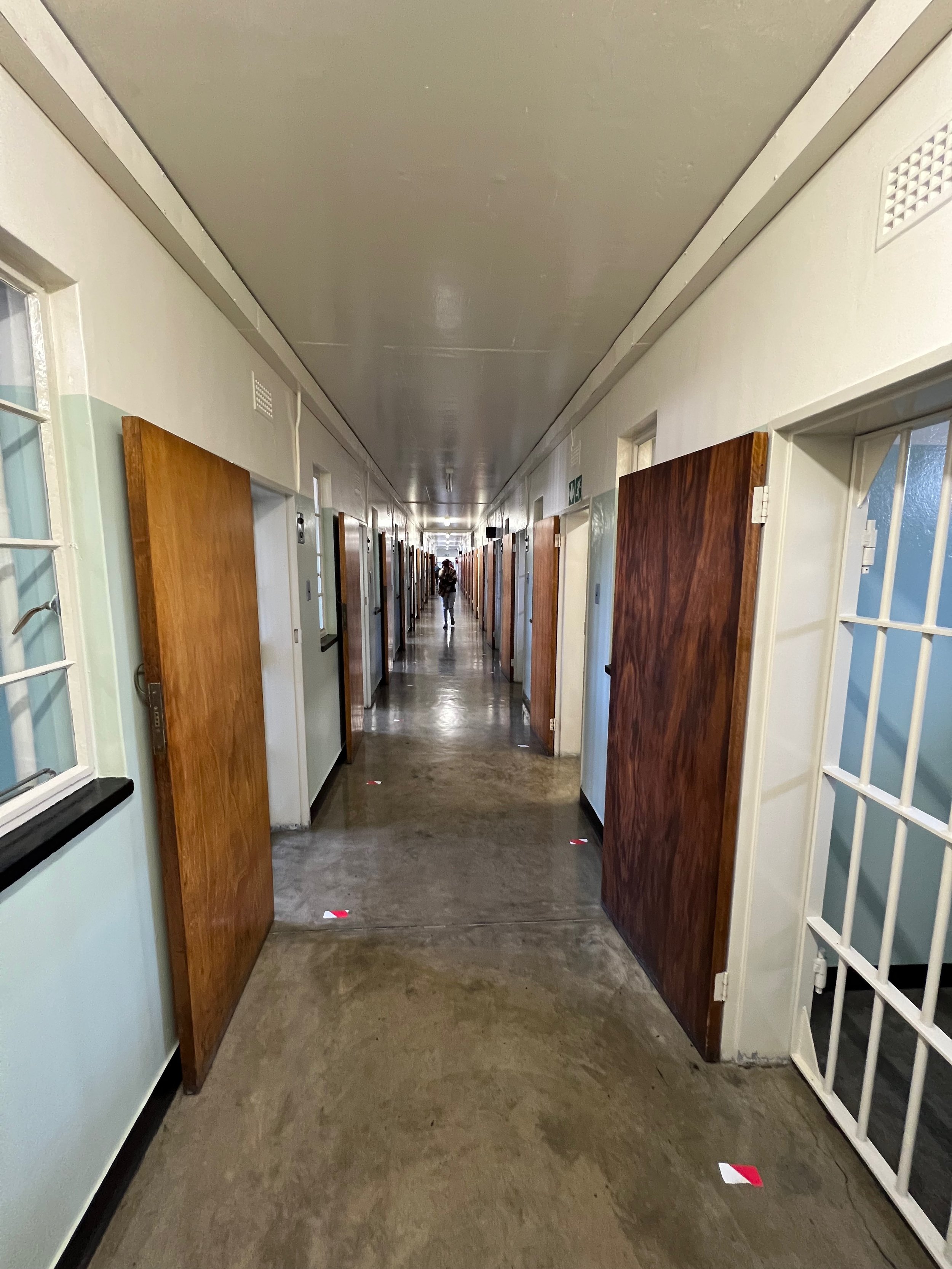

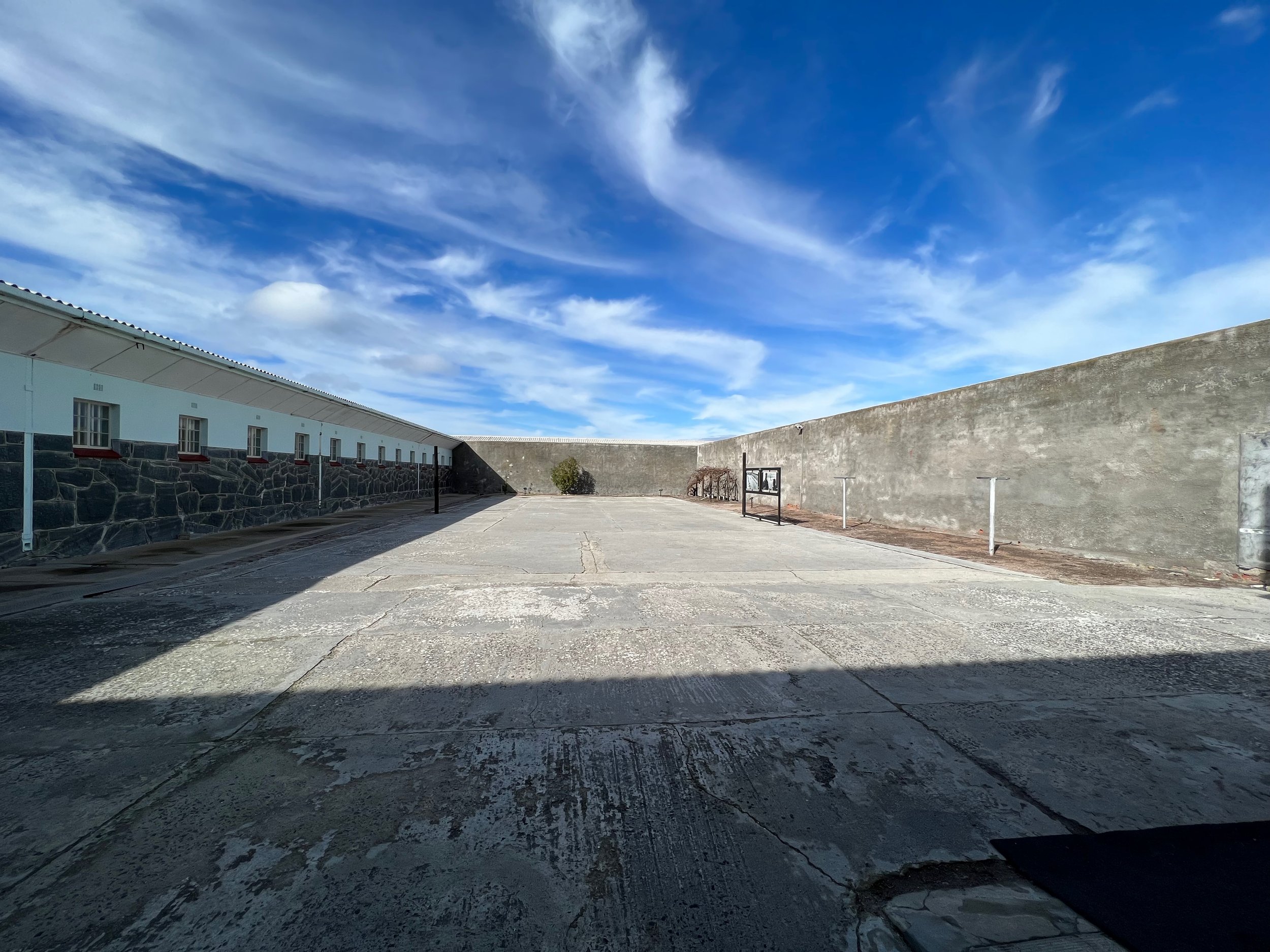
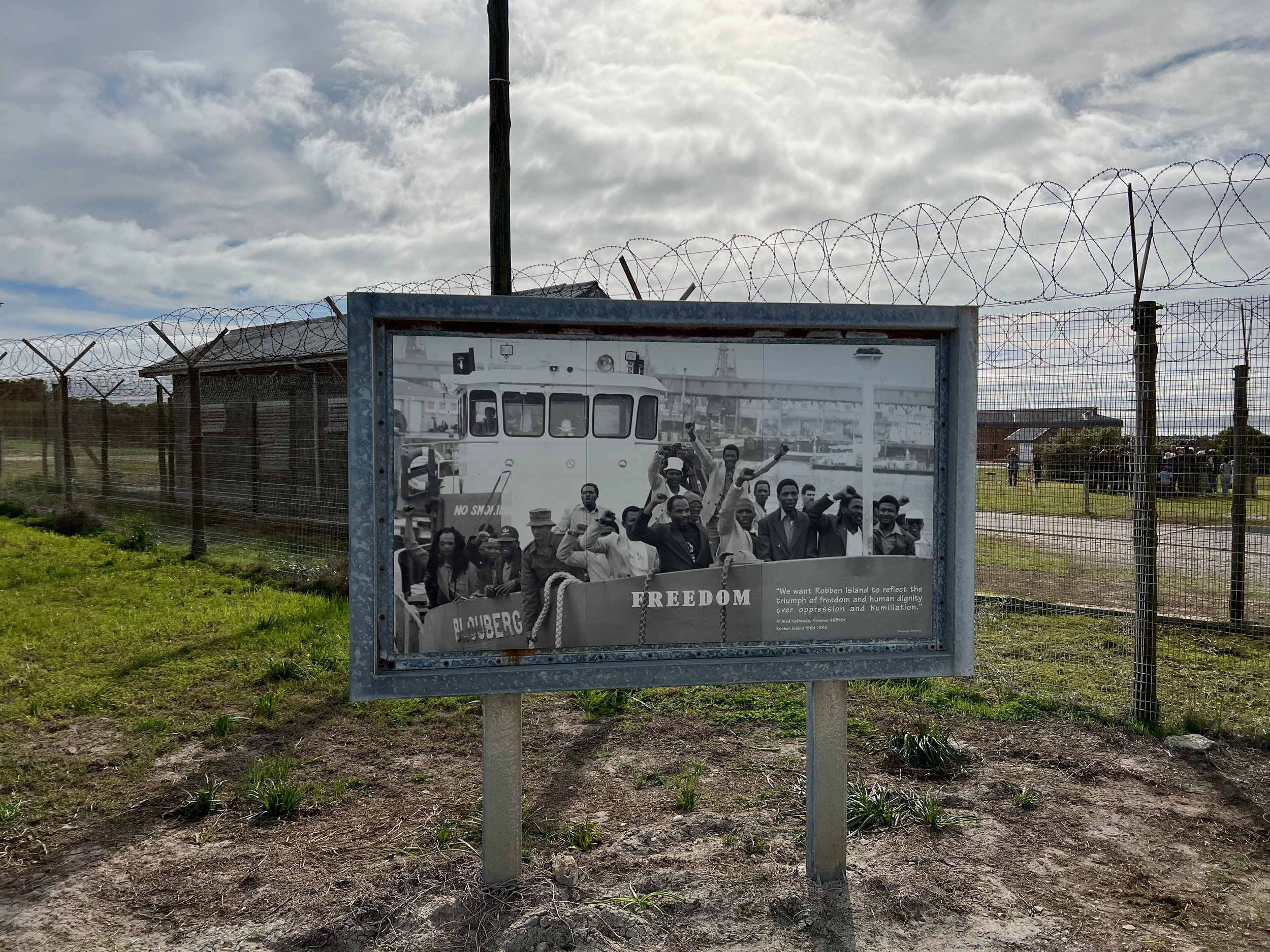
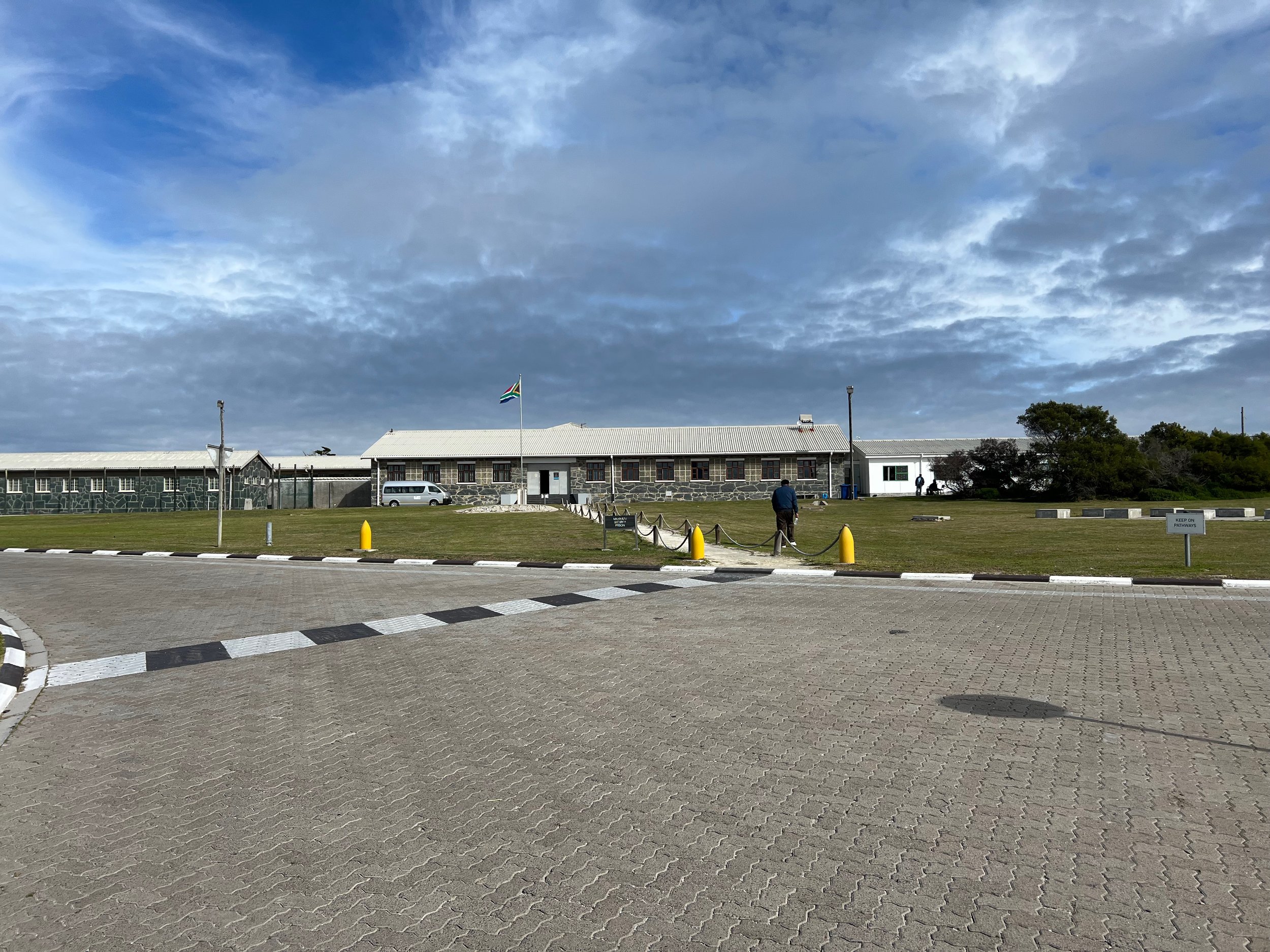
South Africa is a place of contrasts and conflicts and above all hope. The fall of apartheid and the end of white minority rule could have been a vengeful bloodbath, but under the leadership of Mandela the course was set to allow cooperation between the races which is inspiring. South Africa is not without it’s problems, and there is great poverty here, and crime and violence. There is also a vision for the future here which is hopeful and bright. I find this place fascinating.

